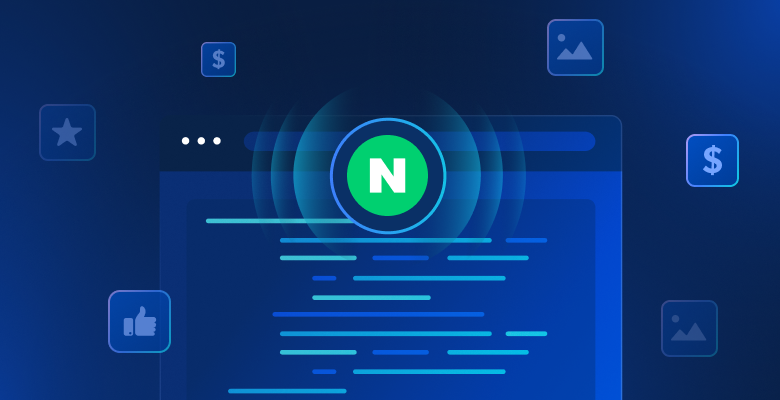TL;DR: IPv6 is the latest version of the Internet Protocol, designed to replace IPv4. IPv6 addresses the limited address space issue in IPv4 by offering approximately 340 undecillion (34 followed by 37 zeros) unique IP addresses. Plus, IPv6 improves security, supports mobile connections better, and ensures the scalability and efficiency required for future demands.
What is IPv6?
IPv6 (Internet Protocol version 6) is the successor to IPv4. It represents the latest rules for routing and addressing data across networks. With the rapid growth of the internet and mobile devices in the 1990s, it became clear that 4.3 billion IP addresses were insufficient for the future. This led to IPv6, a 128-bit address space supporting approximately 340 undecillion unique IP addresses.
Even though we ran out of new IPv4 addresses in 2011, IPv6 was ready to go in 1998. Here’s a quick look at how we got from IPv4 to IPv6:
- The Internet Engineering Task Force (IETF)
- 1998: IPv6 is standardized as RFC 2460.
- 2011: The final blocks of IPv4 addresses were allocated to regional registries.
Structure of IPv6 Addresses
An IPv6 address is made up of 128 bits. These addresses are written as eight groups of four hexadecimal digits: 2001:0db8:85a3:0000:0000:8a2e:0370:7334
If you feel this 128-bit address is complex to read and write, you can reduce its length by following the below tips:
- You can skip the leading zeros in a group.
2001:db8:85a3:0:0:8a2e:370:733
- A single
::can replace one sequence of consecutive zeros. But only once in an address to avoid ambiguity.
2001:db8:85a3::8a2e:370:7334
Types of IPv6 Addresses
IPv6 has 3 main types of addresses.
- Unicast addresses: Used to point to a single device, making sure data goes exactly where it needs to.
- Multicast addresses: Used for group communication. For example, it is suitable for scenarios like streaming where you want many devices to receive the same data simultaneously.
- Anycast addresses: These addresses are shared by multiple devices. Data sent to an anycast address goes to the closest device with that address.
IPv6 Subnetting
Subnetting is a common method used to divide IP addresses into manageable segments. Each IPv6 address can be divided into two main parts:
- The network prefix – Determines the network segment the address belongs to.
- The interface identifier – Specifies the individual device on that network.
For example, consider the below IP address. 2001:db8:1:ab00::1/64:
2001:db8:1:ab00:is the network prefix.::1represents the interface identifier./64that the first 64 bits of the address represent the network prefix, and the remaining 64 bits are available for individual device addresses.
The Need for IPv6
As mentioned, IPv6 was introduced to address several limitations on IPv4. Here are the primary issues associated with IPv4:
1. Exhaustion of IPv4 Addresses
With the exponential growth of mobile and computer users, it became clear that the 4.3 billion IP addresses would not be enough. This raised significant questions regarding the growth of the internet and the addition of new devices and services to the internet.
2. Enhanced Security
IPv4 didn’t have any built-in security features. But, IPv6 comes with built in support for IPsec, enhancing privacy, data integrity, and secure authentication across the internet.
3. Improved Network Efficiency and Performance
IPv6 introduces several features aimed at improving network efficiency and performance.
- Simplified packet headers for more efficient routing and processing.
- Eliminates the need for NAT (Network Address Translation), which can complicate communications and reduce performance.
- Supports multicast rather than broadcast. This reduces network congestion by allowing bandwidth-intensive packet flows (like multimedia streams) to be sent to multiple destinations simultaneously.
4. Support for Mobile Devices
IPv6 is designed to accommodate mobile networks and users better. It enables more efficient routing, seamless device mobility, and autoconfiguration to ensure that mobile devices can maintain consistent internet connectivity as they move.
5. Future-Proofing the Internet
In addition to addressing the immediate limitations of IPv4, IPv6 lays the groundwork for the future expansion of the internet. Its virtually unlimited address space ensures we can continue adding devices and users to the internet for decades without facing the same limitations we had with IPv4.
IPv4 vs IPv6
IPv4 and IPv6 represent two generations of the Internet Protocol. While IPv6 is considered the successor to IPv4, let’s look at some significant attributes of IPv4 and IPv6 to understand the difference.

Advantages of Using IPv6
IPv6 is not just a necessary update but a significant improvement for the future of the internet. Here are the key advantages of IPv6 that address:
1. Address Space
IPv6 significantly increased the number of available IP addresses by moving from the 32-bit address space in IPv4 to a 128-bit space. This expansion introduced approximately 340 undecillion (3.4 × 10^38) unique addresses, ensuring we won’t run out of IP addresses anytime soon.
2. Simplified Header Format
IPv6 streamlines the way data packets are processed with a simplified header format. Unlike IPv4, IPv6’s header is fixed at 40 bytes and eliminates fields that are no longer necessary or have been moved to optional extension headers.
3. Improved Security
IPv6 incorporates IPsec (Internet Protocol Security) as a mandatory protocol part. IPsec provides end-to-end encryption and authentication, ensuring data packets are securely transported across the internet.
4. Auto-configuration
IPv6 simplifies network configuration through its support for auto-configuration mechanisms. This includes Stateless Address Autoconfiguration (SLAAC), allowing devices to automatically generate their IP addresses without needing a manual setup or aDynamic Host Configuration Protocol (DHCP)server.
5. Better Multicast and Anycast Support
Multicast in IPv6 allows more efficient group communications by reducing bandwidth for services like streaming media. IPv6 Anycast addresses improve the delivery of services by allowing a single address to be assigned to multiple servers.
Disadvantage of Using IPv6
Although IPv6 comes with many benefits, it’s not a silver bullet. Here are a couple of disadvantages of IPv6 that you should be aware of.
1. Adoption Rate
The adoption rate of IPv6 has been slower than anticipated. There are several reasons for this slow transition:
- The cost and the effort of upgrading existing infrastructure.
- The need for technical expertise
- The continued functionality of IPv4 with workarounds like NAT.
2. Compatibility Issues:
Since IPv4 and IPv6 operate on different protocols, they can’t directly communicate with each other. This creates challenges during the transition period, and you need to use techniques like dual stack, tunnelling, or translations to ensure everyone stays connected.
Transitioning to IPv6
Transitioning from IPv4 to IPv6 is a complex process. Here are three main strategies you can use to facilitate this transition:
Dual Stack

In a dual stack setup, network devices such as routers, servers, and end-user devices like computers and smartphones are configured to handle IPv4 and IPv6 addresses. Depending on the destination’s capabilities and the network environment, these devices can send and receive data packets over networks using both protocols.
How It Works
- Configuration: A device configured with Dual Stack has two IP addresses: one IPv4 address (
192.168.1.5) and one IPv6 address (2001:db8::1). - Operation: When the device communicates with another on the internet, it prefers IPv6 if the destination is IPv6-enabled. If not, it falls back to IPv4. This decision is typically made using DNS resolution, where the DNS server returns an IPv6 address (AAAA record) if available, or an IPv4 address (A record) if not.
Pros:
- Supports both IPv4 and IPv6.
- Allows for a gradual and seamless transition to IPv6.
- Dual stack networks are prepared for the future since they already support IPv6.
Cons:
- Managing a dual-stack network can be more complex than a single-stack network.
- Requires more memory and processing power to handle two IP stacks.
- Managing two configurations for each device increases the risk of configuration errors.
Tunnelling

Tunnelling is a transition technique that allows the transport of IPv6 packets over existing IPv4 networks. It allows communication between IPv6 devices even when the intervening network infrastructure only supports IPv4.
How It Works:
- Encapsulation: The core concept of tunnelling is encapsulation. It wraps an IPv6 packet inside an IPv4 packet, similar to placing a letter inside an envelope. This wrapper IPv4 packet is a container that can navigate the IPv4 infrastructure.
- Transmission: Once encapsulated, the IPv6 packet is sent over the network like any other IPv4 packet.
- Decapsulation: When the packet reaches its destination, the IPv4 wrapper is removed, and the original IPv6 packet is processed.
Pros:
- Can use existing IPv4 infrastructure.
- Cost-effective.
Cons:
- Performance issues due to bandwidth issues and increased latency.
- Security issues in inspecting encapsulated packets.
Translation

Translation is a method for directly converting IPv6 traffic to IPv4 traffic and vice versa using a NAT-enabled device. This approach mostly facilitates communication between IPv6-only devices and IPv4-only services. Translation resolves the interoperability challenges between the two protocols by converting packet headers and payload information to match the destination’s protocol requirements.
How It Works:
- Protocol Conversion: The process involves taking an IPv6 packet, translating its header to an IPv4 format, adjusting payload data if necessary, and then sending it over an IPv4 network.
- Address Mapping: Since IPv6 addresses cannot be directly mapped to IPv4 addresses due to size differences, translation mechanisms often use a mapping strategy. For example, a pool of IPv4 addresses may represent IPv6 addresses accessing IPv4 services.
Pros:
- Facilitates communication despite protocol differences.
- Do not need to support both protocols simultaneously.
- Extends the life of IPv4 services.
Cons:
- Adds complexity to network design.
- Can negatively impact performance.
- Potential for data loss.
- Stateful translation requires maintaining a mapping table.
Conclusion
IPv6 addresses IPv4’s limitations, offering an almost unlimited address space and improved internet security. It supports the growing number of devices online with its vast address pool and enhances efficiency with streamlined data routing. Transitioning to IPv6 involves updating infrastructures, using strategies like Dual Stack, Tunnelling, and Translation. Despite its slow adoption due to transition challenges, IPv6 is essential for the internet’s future scalability and security. Bright Data offers proxy services of all IP types. Start your free trial now!






